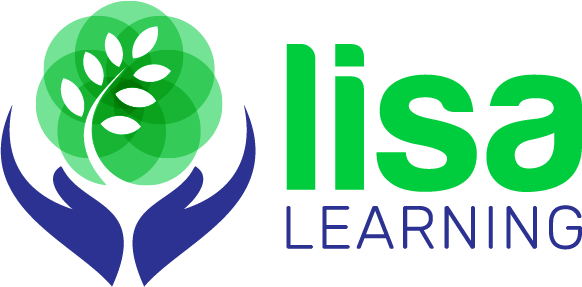By Haley Wilson for D2L (Desire to Learn)
Now is the time of year when we start looking ahead to what may be coming down the road. What changes do we expect to see? How can we prepare for them? What themes will dominate in 2020 and the next decade?
We wanted to take a closer look at three broad trends—how cooperation can help us adapt to learning and workplace evolutions, leveraging self-led learning to create passionate and driven learners, and making learning accessible to people around the world.
1. Adapting to a changing world of learning and work.
We’ve been talking about the skills gap for a while now, but as we go into a new year (and a new decade) it’s unlikely to go anywhere. The half-life of most technical job skills has now fallen to under five years, and according to a McKinsey Global Institute study, by 2030 all workers will need to be prepared to coexist to some degree with increasingly capable machines.
To succeed with the changes, we need to work together. That’s why we wanted to take a closer look at two trends we’re going to see a lot more of in the coming years—work-integrated learning and business-academic partnerships.
Work-Integrated Learning
Work-integrated learning (WIL) is a broad term that covers a host of different experiences including apprenticeships, co-ops, internships, applied research, and boot camps. At their core, however, each of the pieces that make up WIL serve to do one thing—forge connections by integrating what someone is studying with real-world work or practice communities.
The benefits that can come from WIL are big for each of the stakeholders involved—learners, host organizations, and academic institutions.
- Learners find themselves uniquely able to dip their toes into the profession (or professions) they’re interested in, get a head start on developing their professional networks, and obtain highly relevant and transferrable skills.
- Host organizations get glimpses into the transformative innovations and ideas that will spur workforce changes in the years to come, and they get to sample some of the burgeoning talent that will drive those evolutions.
- Academic institutions gain improved insights into the knowledge, skills, and competencies employers are looking for, enabling them to better align educational programs with workplace needs and prepare graduates for success.
John Baker has made a bold prediction that in 20 years, all learners will participate in WIL during their academic careers. You can read more about it here.
Business-Academic Partnerships
WIL isn’t the only way organizations and academic institutions can work together to adapt to future change. Another important vehicle for bringing individual actors together around a common table is business-academic partnerships. When this happens, we see some powerful results. A perfect example is the collaboration between FedEx Express and the University of Memphis Global (UofM Global) that led to the creation of LiFE (Learning inspired by FedEx), a custom degree initiative designed with the needs of FedEx Express workers in mind.
The primary problem FedEx Express wanted to address was clear: retention. Voluntary attrition at the Memphis World Hub was becoming a costly challenge, and although the company had a tuition assistance program in place, workers simply weren’t using it. Knowing it needed a unique solution, FedEx Express worked with UofM Global to create a program that would eliminate barriers to education and generate a pipeline of individuals ready to excel in their careers with the company.
Already, the outcomes have been overwhelmingly positive. Enrollment in the first year far surpassed what FedEx Express had expected, contributing to reduced attrition and improved recruitment. Higher program enrollment has also meant increased growth for UofM Global.
You can read more by downloading the case study. We also had a chance to chat with Joe Kelly, one of the program’s first graduates, during Fusion 2019. Click here to watch the recording.
2. Creating inspired learners with Competency-Based Education.
Self-directed learning isn’t a new concept. Though it was revived in the 20th century, its roots go back to Ancient Greece with the likes of Socrates and Aristotle. One of the most lasting definitions of the concept comes from Self-Directed Learning: A Guide for Learners and Teachers, published by Malcolm Knowles, an American educator, in 1975:
In its broadest meaning, self-directed learning describes a process in which individuals take the initiative, with or without the help of others, in diagnosing their learning needs, formulating learning goals, identifying human and material resources for learning, choosing and implementing appropriate learning strategies, and evaluating learning outcomes.[1]
Today, self-directed learning is used by educators from across the spectrum—in elementary and high school classrooms, on college campuses, and by employers. It’s an effective learning tool because it puts learners in control of their journeys and helps keep them more engaged with the materials and the process. Plus, it’s in demand. According to LinkedIn’s 2019 Workplace Learning Report, over 40% of millennial and Gen Z workers want their learning experiences to be fully self-directed and independent.
But there’s one thing in particular self-directed learning does that will play an incredibly important role in the years to come—it creates lifelong learners by teaching people how to learn. This prepares and empowers people to drive their learning and development journeys and actively seek new knowledge and skills that can help them shine.
3. Making learning more accessible for everyone.
Education truly does have the power to transform. It can open doors to otherwise unknown possibilities and unlock skills that allow people to thrive. But to make any of that happen, learners need to be able to access it.
Accessibility in education
Accessibility in education is and always has been a commitment for us at D2L. Believing learning technologies should never limit learning opportunities, we design our products with empathy to enable and empower learners with disabilities.
One of the most inspiring stories for us has been that of McClain Hermes. When McClain was eight years old, she underwent four emergency eye surgeries due to issues caused by Wagner’s syndrome, a condition that leads to progressive vision loss. She is now completely blind in her right eye and has very limited vision in the left, but she hasn’t let that hold her back. McClain is a Paralympic swimmer who holds over 25 records (20 American, five Pan-American, and one world). In May 2019, she graduated from Gwinnett Online School with high honors, and in September 2019 she began studying at Loyola University Maryland.
To hear McClain tell her own story, check out this recording from Fusion 2019.
Crossover point on mobile responsive web
How, where, and when we learn is changing and becoming more—pardon the pun—mobile. Over 65% of the world’s population (5.15 billion people) now has mobile devices such as smartphones and tablets. Learning experiences need to be seamless enough to adapt to provide optimal usability and deliver full functionality across the board. You can learn more about D2L’s mobile-first strategy in this on-demand webinar.
But any-device access doesn’t only mean enabling people who are using the newest smartphones. People with older devices or limited connectivity need to be able to access platforms and content as well. Gay Lea Foods encountered this challenge when creating learning experiences for its extensive network of dairy farmers and processing facilities. Working with D2L, Gay Lea Foods was able to make sure its courses would be easy to navigate so delegates could participate even in rural areas with limited bandwidth. Find out more about Gay Lea Foods’ story here.
[1] Knowles, M. (1975) Self-directed learning: A guide for learners and teachers, New York: Cambridge Books.
Source: www.d2l.com





